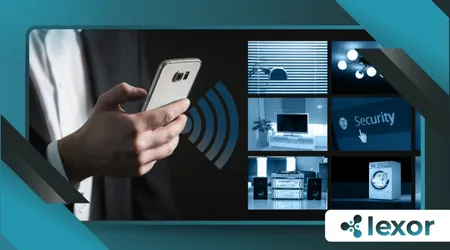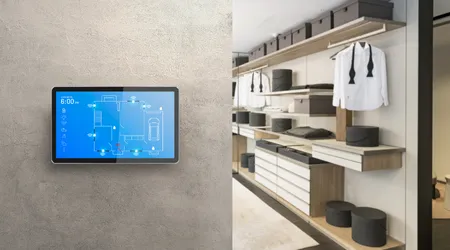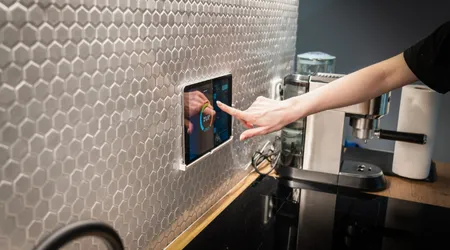Future-Proofing Your Home: Smart Integration Tips

With the rapid advancement of technology, future-proofing your home through smart integration tips is no longer optional—it’s essential.
From energy efficiency to enhanced security, integrating smart systems into your living space ensures your home remains adaptable, efficient, and cutting-edge for years to come.
But what does it truly mean to future-proof your home?
It’s about creating a seamless ecosystem where devices, systems, and infrastructure work together intelligently.
This article dives into actionable smart integration tips, backed by data and expert insights, to help you build a home that’s ready for tomorrow’s innovations.
Why Future-Proofing Matters in the Age of Smart Homes
The global smart home market is projected to reach $135 billion by 2025, according to Statista.
This staggering growth underscores the importance of adopting smart integration tips early.
Future-proofing isn’t just about keeping up with trends; it’s about ensuring your home remains functional, efficient, and secure as technology evolves.
Consider this: a home equipped with outdated systems may struggle to integrate new devices, leading to inefficiencies and higher costs.
On the other hand, a future-proofed home leverages interoperable technologies, allowing you to add or upgrade devices effortlessly.
Moreover, as smart home technology becomes more mainstream, the cost of devices will likely decrease, making it more accessible for homeowners.
Investing in a future-proofed home now can lead to significant savings in the long run.
Ultimately, future-proofing is about enhancing your quality of life and adapting to the ever-changing technological landscape.
+ Smart Home Hubs: Choosing the Right System
1. Start with a Robust Smart Hub
The foundation of any smart home is a reliable smart hub.
Think of it as the brain of your home’s ecosystem, connecting and controlling all your devices.
When selecting a hub, prioritize compatibility with multiple protocols like Zigbee, Z-Wave, and Wi-Fi.
This ensures your system can integrate with a wide range of devices, from smart lights to thermostats.
Pro Tip: Opt for hubs with voice assistant integration, such as Amazon Alexa or Google Assistant.
This adds an extra layer of convenience and future-proofs your home against emerging voice-controlled technologies.
Additionally, consider the hub’s ability to receive regular firmware updates.
This feature is crucial for maintaining security and ensuring compatibility with new devices.
A robust hub will not only connect your current devices but also adapt to future innovations in smart technology.
2. Prioritize Interoperability
One of the most critical smart integration tips is ensuring your devices can communicate seamlessly.
Interoperability eliminates the frustration of dealing with incompatible systems.
For example, a smart thermostat should work harmoniously with your HVAC system, smart lights, and even your security cameras.
Table 1: Popular Smart Home Ecosystems and Their Compatibility
| Ecosystem | Compatible Devices | Key Features |
|---|---|---|
| Apple HomeKit | Lights, Locks, Thermostats | High security, Siri integration |
| Google Nest | Cameras, Speakers, Sensors | Google Assistant, Energy-saving |
| Samsung SmartThings | Lights, Plugs, Sensors | Multi-protocol support |
Moreover, investing in devices that support open standards can enhance interoperability.
These standards allow for better communication and integration between various brands and technologies.
By prioritizing interoperability, you create a more cohesive and efficient smart home environment.
3. Invest in Energy-Efficient Solutions
Future-proofing isn’t just about convenience—it’s also about sustainability.
Smart integration tips often highlight the importance of energy-efficient devices.
For instance, smart thermostats like the Nest Learning Thermostat can reduce heating and cooling costs by up to 20%, according to a study by the Environmental Protection Agency.
Pairing these devices with solar panels or energy storage systems can further enhance your home’s efficiency.
Over time, these investments pay for themselves while reducing your carbon footprint.
Additionally, consider smart lighting solutions that adjust based on natural light levels.
These systems can significantly lower energy consumption while maintaining a comfortable living environment.
Investing in energy-efficient solutions not only benefits your wallet but also contributes to a healthier planet.

4. Enhance Security with Smart Integration
Security is a cornerstone of any future-proofed home.
Modern smart security systems go beyond traditional alarms, offering features like facial recognition, real-time alerts, and remote monitoring.
Integrating these systems with other smart devices, such as lights and locks, creates a comprehensive security network.
For example, a smart doorbell can trigger your indoor lights to turn on when it detects motion, giving the impression that someone is home.
This level of integration not only deters intruders but also provides peace of mind.
Furthermore, consider implementing smart locks that can be controlled remotely.
This feature allows you to grant access to guests or service providers without needing to be physically present.
By enhancing security through smart integration, you create a safer living environment for you and your family.
5. Plan for Scalability
A future-proofed home is one that can grow with your needs.
When implementing smart integration tips, consider scalability.
Start with essential devices like smart lights and thermostats, then gradually expand to include advanced systems like whole-home automation or AI-powered assistants.
Table 2: Scalability Plan for Smart Home Integration
| Stage | Devices to Add | Benefits |
|---|---|---|
| Beginner | Smart Lights, Thermostat | Energy savings, basic automation |
| Intermediate | Security Cameras, Smart Locks | Enhanced security, remote access |
| Advanced | Whole-Home Automation, AI | Full control, predictive analytics |
Additionally, when selecting devices, ensure they can be easily integrated into your existing system.
This foresight will save you time and resources as your smart home evolves.
Planning for scalability allows you to adapt your home to changing needs and technological advancements.
6. Embrace Voice and AI Integration
Voice assistants and AI are revolutionizing how we interact with our homes.
Integrating these technologies into your smart home setup ensures your system remains relevant as AI capabilities expand.
For instance, AI-powered systems can learn your habits and adjust settings automatically, from dimming lights to optimizing energy usage.
Pro Tip: Choose devices that support multiple voice assistants.
This flexibility ensures your home can adapt to new AI developments without requiring a complete overhaul.
Moreover, as AI technology advances, you can expect even more sophisticated features, such as predictive maintenance alerts.
These alerts can notify you when devices need attention or replacement, further enhancing your home’s efficiency.
Embracing voice and AI integration positions your home at the forefront of technological innovation.
7. Don’t Overlook Network Infrastructure
A robust Wi-Fi network is the backbone of any smart home.
Without a reliable connection, even the most advanced devices can underperform.
Invest in a mesh Wi-Fi system to ensure seamless coverage throughout your home.
Additionally, consider upgrading to a router that supports the latest Wi-Fi 6 standard for faster speeds and better device handling.
Moreover, consider the placement of your router and devices to minimize dead spots.
Strategically positioning devices can enhance connectivity and performance, ensuring your smart home operates smoothly.
A strong network infrastructure is essential for maximizing the benefits of your smart home investments.
++ Smart Security Systems: Protecting Your Digital Home
8. Stay Informed About Emerging Technologies
Future-proofing your home requires staying ahead of the curve.
Keep an eye on emerging technologies like 5G, edge computing, and IoT advancements.
These innovations are poised to redefine smart homes, offering faster connectivity and more efficient device management.
Additionally, subscribing to industry newsletters or following tech blogs can keep you updated on the latest trends.
Participating in online forums or local tech meetups can also provide valuable insights and networking opportunities.
Staying informed ensures that your home remains adaptable and ready for future advancements.

The Cost of Future-Proofing: Is It Worth It?
While implementing smart integration tips may require an upfront investment, the long-term benefits far outweigh the costs.
From energy savings to increased property value, a future-proofed home is a smart financial decision.
Plus, the convenience and security it offers are priceless.
Moreover, consider the potential savings on utility bills and insurance premiums that come with smart technology.
These savings can significantly contribute to offsetting the initial investment.
Ultimately, the peace of mind and enhanced quality of life that a future-proofed home provides make it a worthwhile endeavor.
Final Thoughts
Future-proofing your home through smart integration tips is an investment in your quality of life and the longevity of your property.
By prioritizing interoperability, scalability, and emerging technologies, you can create a home that’s not only smart today but also ready for the innovations of tomorrow.
As technology continues to evolve, the homes that adapt will thrive.
Start your journey toward a future-proofed home today, and enjoy the peace of mind that comes with knowing your living space is prepared for whatever the future holds.
In conclusion, the process of future-proofing your home is ongoing.
Regularly reassessing your systems and staying updated on technological advancements will ensure your home remains at the cutting edge of innovation.
